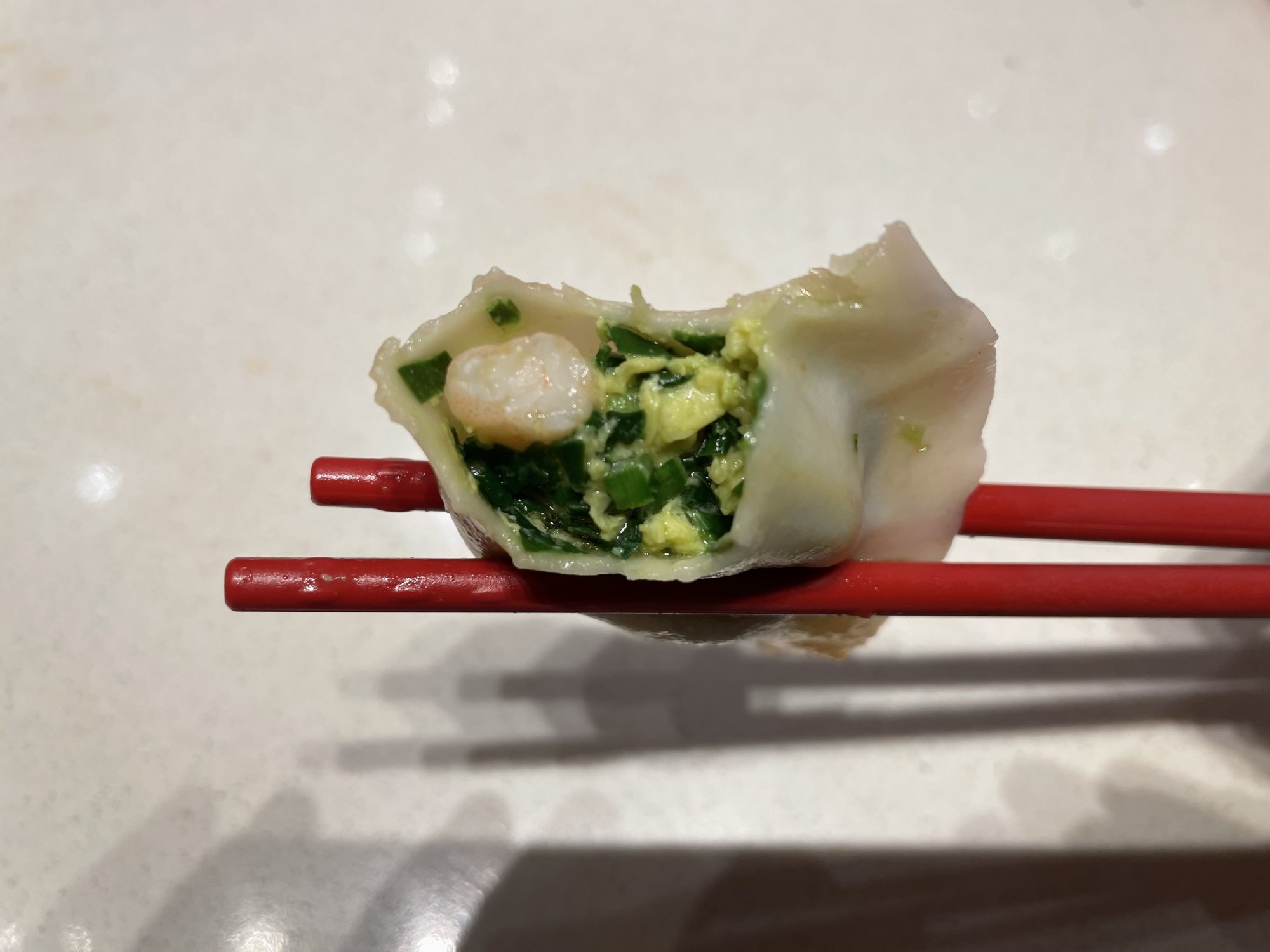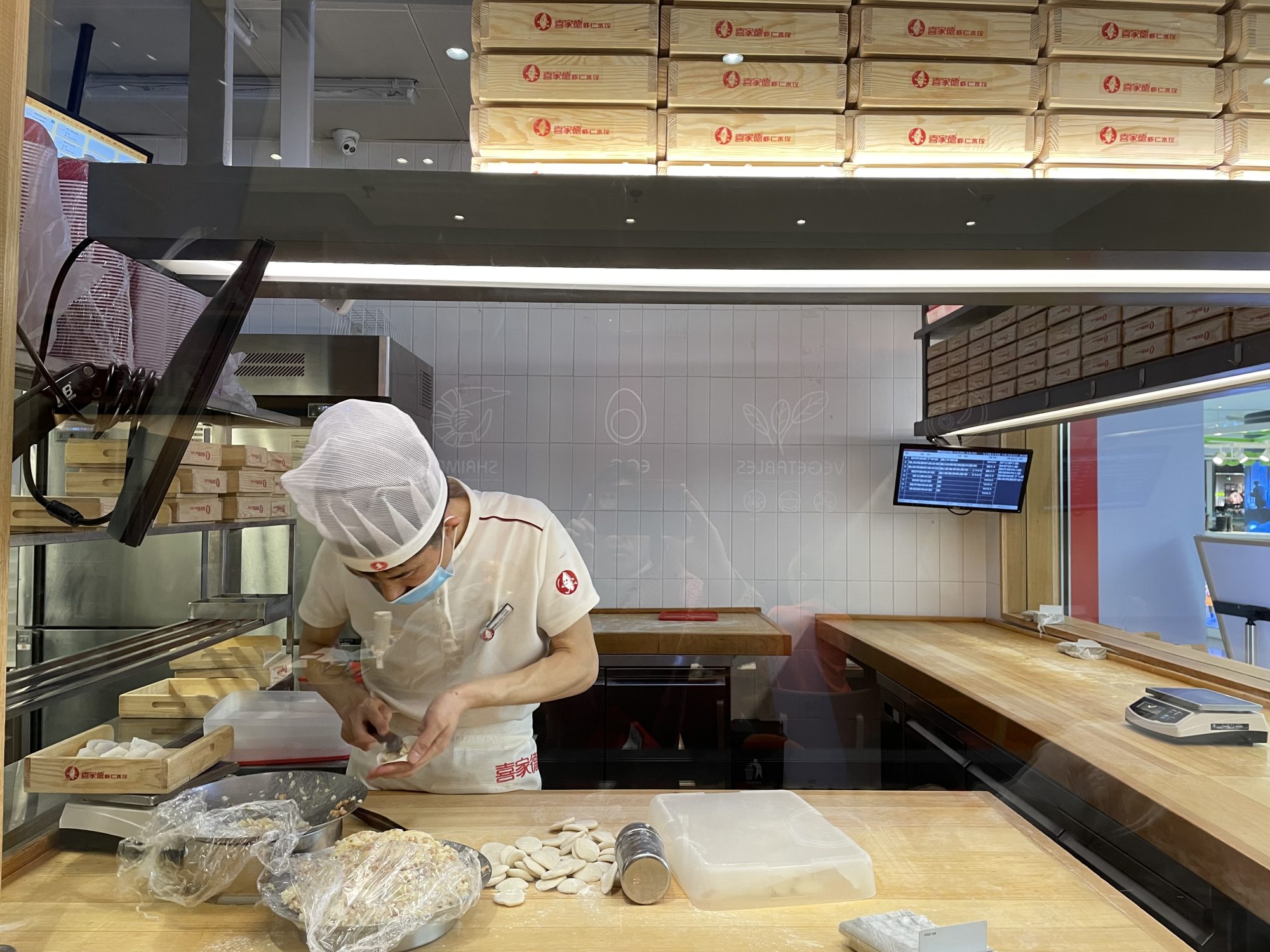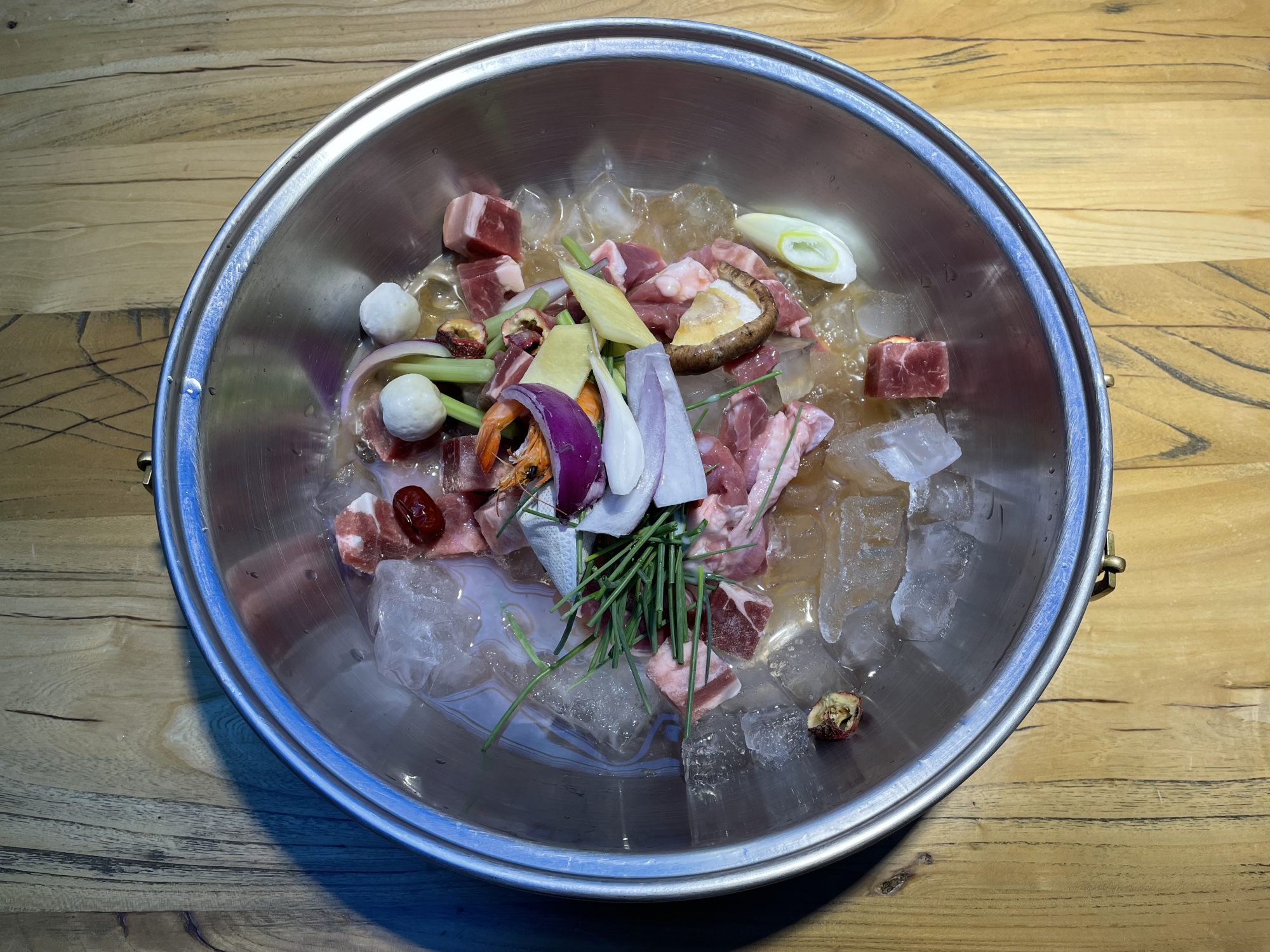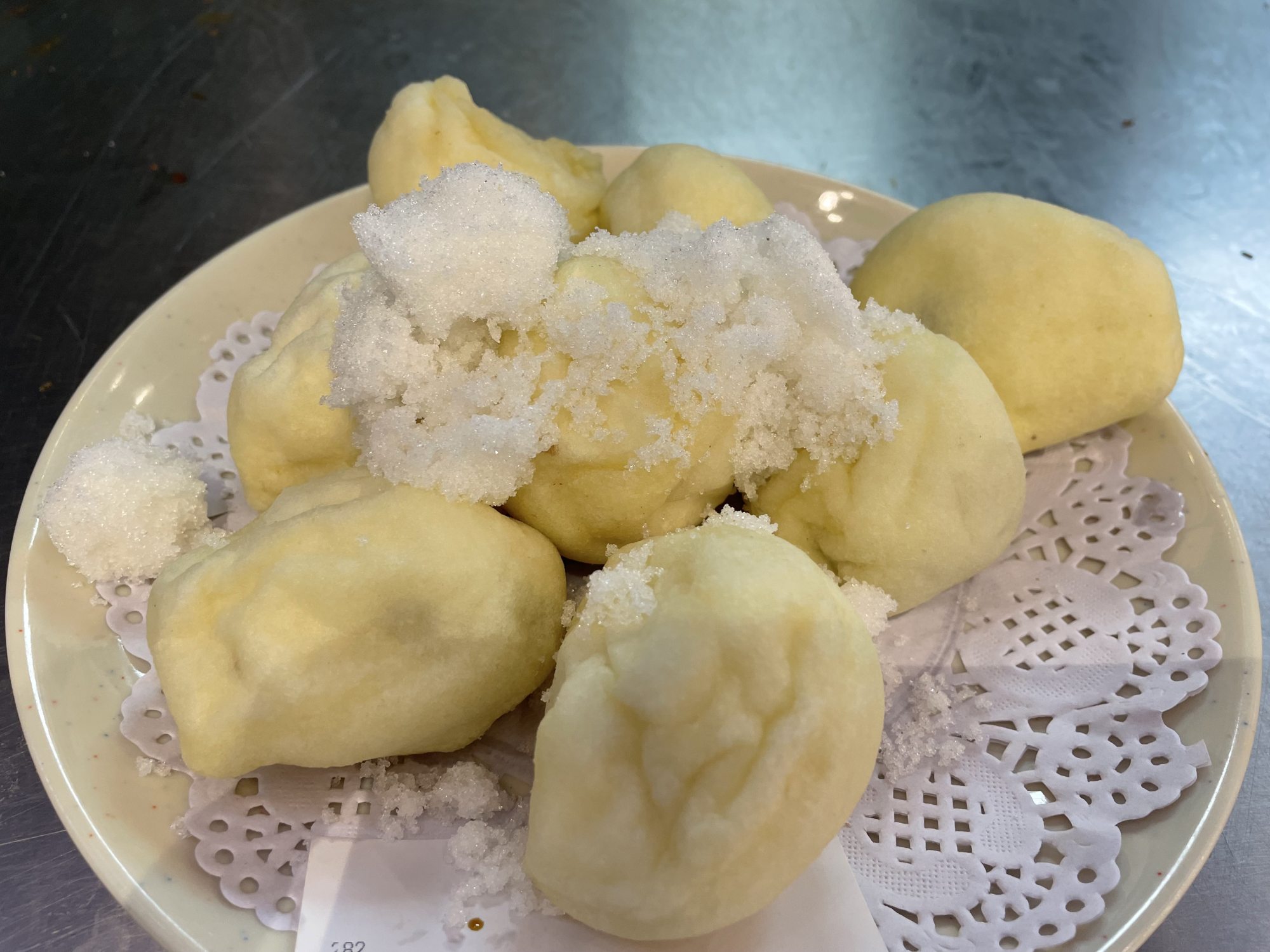
Chinese food for winter: how dishes like hotpot, dumplings and sweet desserts keep people warm in northern China’s freezing conditions
- Sheep meat is popular in China’s north during winter, in dishes such as sheep spine hotpot that can taste quite different than their southern counterparts
- Stewed pears with red wine, and mashed Chinese yam with blueberry sauce, are two desserts widely eaten that have Chinese medicinal properties
Winter in the north of China is harsh and gruelling with temperatures falling far below zero, but eating warming food helps northerners ride out the freezing conditions.
One of the dishes that most typically represents winter in China is dumplings. Dumplings were invented by Zhang Zhongjing, a doctor in the Eastern Han dynasty (AD25-AD220), as a tonic to protect his patients’ ears from frostbite, using Chinese herbs selected to improve the blood flow. He called the dumplings jiao’er, or tender ears. He made jiao’er by boiling mutton, chilli and Chinese herbs together and mincing them before wrapping the filling in dough.
There are many dumpling specialist shops in the north of China. One of the biggest chains is Xi Jia De, which has around 600 outlets in China. Founded in the city of Hegang in Heilongjiang province in 2002, the chain features open kitchens where customers can see their dumplings being made with fresh ingredients.
Instead of giving customers a lot of choices, Xi Jia De sells only five kinds of boiled dumplings, including pork and mushroom; sea cucumber, pork and dried shrimp; and egg, shrimp and Chinese chives. Customers can use garlic, chilli and vinegar to mix their own sauce.


We tried all five choices and loved them all for their thin wrappers, fresh ingredients and being MSG-free. Costing around 30 yuan (US$5) a plate for 12 dumplings, the affordable price makes the restaurant popular with customers in winter.
Lamb is another popular warming food in the north of China. In Chinese medicine, lamb is seen as a tonic that can warm the heart and stomach. But while you will get sheep meat (mian yang) when you order it in the north, you’re much more likely to get goat meat (shan yang) when you order it in the south.
Eat like a lord this Christmas with the Downton Abbey cookbook
Northerners have conceived of myriad ways to eat lamb. With Inner Mongolia producing the most lamb and mutton of China’s regions, accounting for 1.13 million tonnes – or about 23 per cent – of annual sheep meat production in China, according to data firm CEIC, it’s no surprise that northern lamb cuisine is considered superior to that found in the south.
Southerners like to use strong condiments to tone down the distinctive taste of lamb in dishes like braised lamb in brown sauce cooked with radish, soy sauce, red dates, rock sugar and ginger. Northerners, meanwhile, like to eat the meat with light or even no seasoning in dishes like lamb hotpot, and roasted whole sheep with only a smattering of condiments.
At Caoyuan Wangshi, a Mongolian specialist lamb hotpot chain, diced lamb cubes are served in pots with ice to keep the meat fresh before waiters douse them in hot water to make the hotpot soup.

We ordered a two-person set (258 yuan) with 250 grams of lamb thigh and 250 grams of lamb shoulder, coupled with other hotpot staples such as bean curd, vegetables, mushrooms, corn and congealed duck blood. For the soup base, which comes in three flavours – tomato, pickled vegetables and chilli – we chose the lightest, tomato, to better sample the lamb’s taste, which was tender and delicious.
Another popular lamb dish in northern winters is yang xie zi, or sheep spine. The literal translation of yang xie zi is sheep scorpion, due to the shape of the spine.
Yang xie zi hotpot comes with a thick brown broth which is made from boiling the spine for hours with various condiments including chilli, star aniseed, black bean and cinnamon.
The food allergy a Hong Kong quarantine hotel can’t cater to
Tie guo dun, or steel pot stewing, is a traditional cooking method in northeast China. Households keep a large steel pot, heated by charcoal, to cook fish, chicken, goose and vegetables. Restaurants that serve tie guo dun can be recognised by the large steel pot in the centre of the tables.
At Shanhetun Steel Pot Stewing, a hole-in-the-wall eatery in Shilipu town in Beijing’s northeast Miyun district, the signature dish is steel pot water-boiled fish. We ordered a two-person fish set (138 yuan) which included a 1.26kg long snout catfish and other hotpot ingredients such as tofu and eggplant.

The waiter put all the ingredients into the steel pot and poured a bottle of beer into the soup before covering with a lid for around 15 minutes. Other ingredients, including green peppers and glass noodles, can be ordered at additional cost, to stew together with the fish. The waiter stopped us from removing the lid before the 15 minutes were up. This made the fish meat overcooked, but the other ingredients, which absorbed the soup, were delicious.
For winter dessert in the north of China, stewed pears with red wine is a common dish in eateries serving north-eastern cuisine. The throat-soothing and lung-boosting tonic is made from stewing red wine, yellow sugar, honey and pear together. We tried the dish at Shanhetun Steel Pot Stewing. The pear’s aroma, mixed with the sweetish red wine, refreshed the palate.
Another common dessert beloved by northerners in winter is mashed Chinese yam with blueberry sauce, which Chinese medicine practitioners believe warms the stomach and boosts eyesight. Chinese yam, whether in powdered form or a fresh ingredient, is a popular and cheap tonic consumed in large quantities by northern Chinese people.

The last must-have northern Chinese dessert in winter is xueyi dousha, or soft-fried bean-paste dumpling, a delicacy from Jilin province. Red bean paste is put in a wrapper made by mixing egg yolk with corn starch, which is then softly deep-fried. With white sugar powder sprinkled on top, the crispy dessert is a delight to eat.

